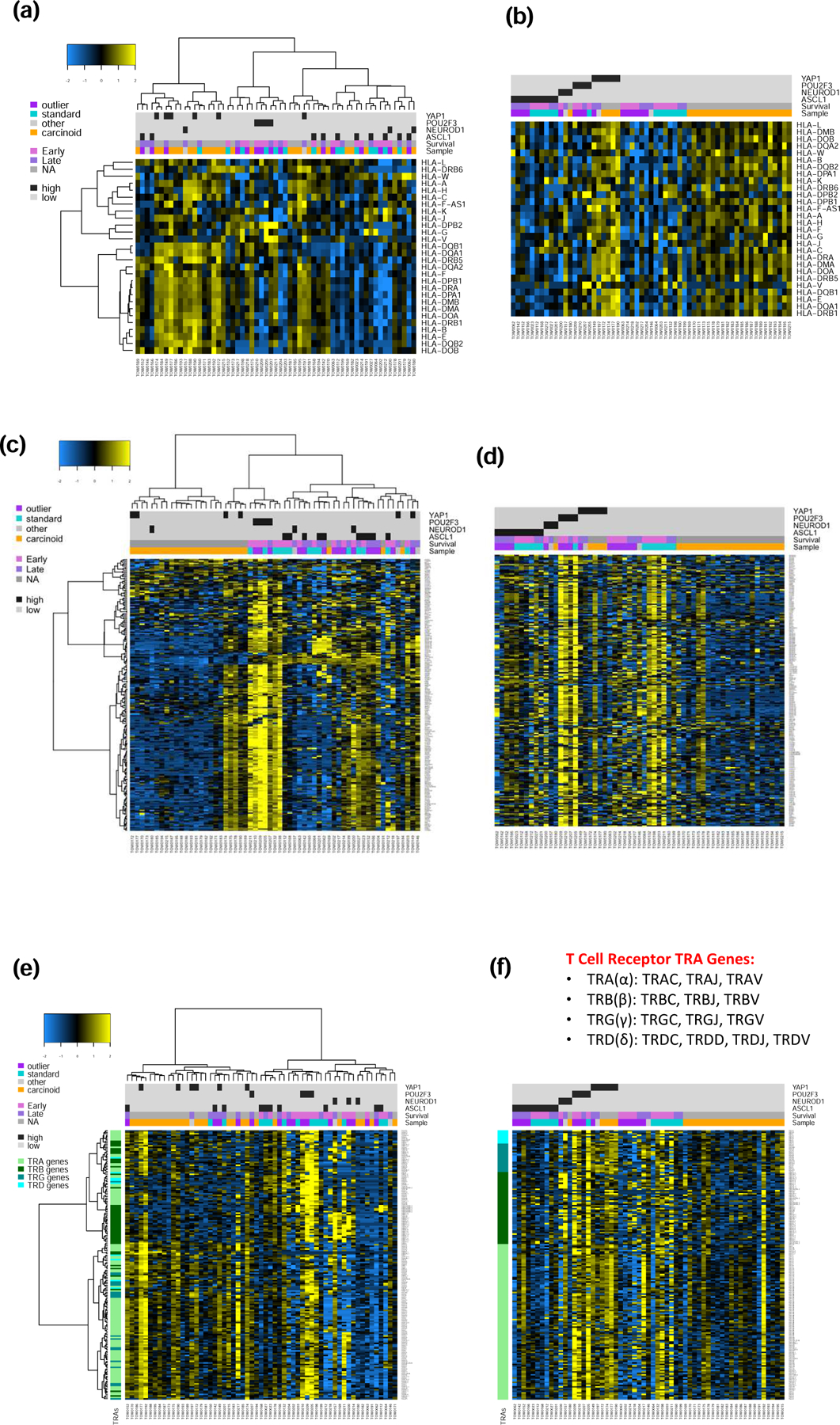Figure 4:

Unsupervised and supervised analyses of expression profile in SCLC and carcinoid samples displayed as a heatmap in which blue and yellow represent low and high expression, respectively. Samples were annotated for histology, survival (outliers including early survival i.e. bottom decile of OS and late survival i.e. top decile of OS and the intermediate group), and SCLC subtypes. a&b): Expression of HLA genes showed no clear correlation with survival but the highest expression was observed in SCLC-Y and carcinoid tumors. c&d). Contrarily, the expression of a panel of 206 genes that encode for cancer testis antigens, a type of oncofetal protein, showed low expression in SCLC-Y and carcinoid but high expression in SCLC-P and a subset of indeterminate SCLC patients who suffered early death. e&f). Unsupervised analysis showed intense expression of Tcrb gene in a subset made up predominantly of SCLC-N and SCLC-P subtypes; on supervised analyses, the highest expression for the four T cell receptor genes (Tcra, Tcrb, Tcrg, and Tcrd) was observed in the SCLC-Y and SCLC-P subtypes.
